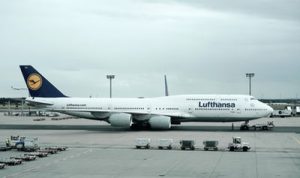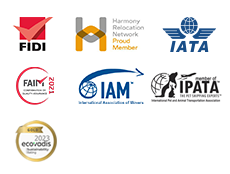Costs of air transportation to Brazil
You probably know by now that air transport is the most expensive form of transport there is. To put things in perspective, the costs of air transportation for a passenger plane such as Boeing 747 are $34 per second of flight. And that doesn’t even include staff wages, maintenance and safety inspections, and whatnot. However, it’s also a reliable form of transportation, and that is why so many people go for it. It’s arguably better to pay more for a better service, wouldn’t you agree? So, let’s make a quick examination of costs of air transportation to Brazil. We’ll try to figure out is it better to go by land, sea or air. Based on the evidence, we’ll help you make a rational and financially sound decision.
When calculating costs of air transportation, keep in mind the FX risk
FX risk (or foreign exchange risk) happens when a service by a company that operates in several countries (this is pretty typical for the moving industry) calculates their revenue, their operating costs, and how much they charge their customer in different currencies. If you’re moving from Brazil to the USA, you’ll just switch costs from the Brazilian real (BRL) to USD. As you know, these prices tend to change every now and then:

Costs of air transportation can often differ due to variance in foreign exchange.
For example, a stronger USD means that you’ll have to pay more if you’re converting from BRL to USD, because the adjustment may not reflect on the prices. The prices may remain in place. The costs of air transportation from Brazil to the US will be lower if you have your money in USD when USD grows stronger. The graph above shows the opposite – the dollar is losing compared to real. If that is the case, you should convert from USD to BRL if you haven’t already. This is especially important if you’re moving across continents, for example, if you’re moving from England to Brazil.
Costs of air transportation are also influenced by how much stuff needs lugging
This is a very simple concept. The more stuff you have, the more expensive it is to move it, right? This is true for trucks, vans and freights. It also applies to airplanes, to a lesser extent. However, it isn’t so simple. It also depends on what kind of stuff needs moving. For example, there’s furniture, wardrobes, bookshelves, beds… those are heavy and hard to load, and easy to break.

And you thought your dad’s Lexus had a powerful engine. However, the trunk is a bit of an issue here…
On one hand, it makes them suitable for air transport. On the other hand, they tend to increase the price by quite a bit, actually. The essence of air transport, however, is not the weight – the power of a single Boeing 777 engine cranks out 110.000 horsepower (typically, airplanes have two or three engines), so an additional ton wouldn’t matter much. However, the volume is of great importance, because…
The costs of air transportation are much more dependant on volume than weight
You see, when it comes to truck or van transportation, the key factor may be weight. After all, overloading a truck will cause damage to its suspension. Airplanes have other sorts of problems, most notably, cargo volume. You see, this is generally not a problem on ships. The construction of freights allows for much heavier load – however, ships do not take the weight that well, so, if you’re doing a massive move (such as an office move), you might as well pay extra for the plane. International movers Brazil suggest if you take a fright if you’re willing to wait and save some cash while you’re waiting, however, if you need an office moved as soon as possible, go for the plane.
What do the experts say?
The economics geeks over at the World Bank say that there are distinct advantages to plane transportation. These are:
- Plane transport is generally much faster, but also much more expensive. A freight transport that would cost you $1200 by freight will cost you up to $4000 by plane. That’s 233% in additional costs;
- It’s also much more reliable – people (especially customers) are extremely picky when it comes to their belongings. And who isn’t? The point is, tough competition breeds excellent service, and air transport is nothing if not competitive;
- It’s also well-protected. In all countries, airplanes are under tight safety regulations. We’re talking about piles of safety certificates.
What can be shipped by air?
Well, anything. Think of airplanes as huge, airborne buses. However, most people commonly opt in favor of airplanes when they’re moving things such as electronics, documents, and office material. Airplanes are a highly popular choice among companies such as agencies and NGOs, which, by default, possess piles upon piles of office material. This material is well suited for the cargo department of an airplane, popularly called an airplane’s “belly”.

Most of the cost of air transportation falls down to office material.
So, what are the other costs of air transportation that must be factored in?
It’s not only the size of the package and the fuel, there are other things that you should watch out for. For example, additional security charges. If something goes wrong in a bus, you stop the bus. If something goes wrong in a plane, you’ll have an emergency landing which usually doesn’t end with people getting hurt, but it’s still large property damage. For that reason, you should get insurance. Even the greatest among us make mistakes every now and then. This especially applies if you’re transporting statues and artwork or something else which has artistic or spiritual value, instead of just monetary.
To conclude, the costs of air transportation, especially international, are much higher than other forms of transportation, however, that happens for a reason. If you appreciate safety, speed and reliability, then, by all means, go for air transportation.










